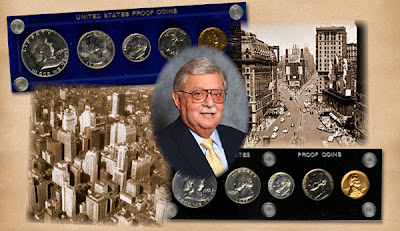
To be able to provide the coins, my Uncle Joe made a pact with E.A. Parker in San Francisco and Dan Brown in Denver. Each year we would make an exchange of bags of all denominations with each other. Stack’s would furnish Dan Brown and Earl Parker with the Philadelphia coinage of the current year, and in turn they would send us the coinage of San Francisco and Denver.
It was a great deal for all, the only cost we each had in addition to the face value of each bag was the shipping charges to each other. We then had pieces available for collectors trying to keep their collections updated to the current year, and these collectors always appreciated this special service.
I might also mention the confusion that was created by the Mint in issuing the 1950, 1951, and 1952 Proof sets. Each year was boxed, the first with the coins in cellophane, then wrapped in tissue within the box. The only way we could tell the 1950 and 1951 sets was by the gummed tape which sealed the box.
The 1950 Proof sets had a single tape strip, and the 1951 had two double criss-crossed strips of tape. Neither box was dated, and only in 1952 did the Mint finally identify the boxes by stamping the date on them. By 1953 the Mint sealed the sets in dated envelopes.
The people who always get excited by the possible investment value of a current Proof set insisted that its value depended on its being kept in a sealed box. No one, according to these gurus, should open the box. The question then was “What is in the box?” Was it a 1950 or 1951? The collector didn’t know the difference.
When we sold the sets in the early 1950s quite often we would take a sealed set and slit it open in front of the buyer. More than once, the buyer said “I don’t want an open box! It loses its investment value!” We always asked, “How do you know what’s in the box?” Usually at that moment they rejected the open set or said, “We trust you!”
This was only one of the obstacles we all experienced in trying to help collectors. It wasn’t always easy!





